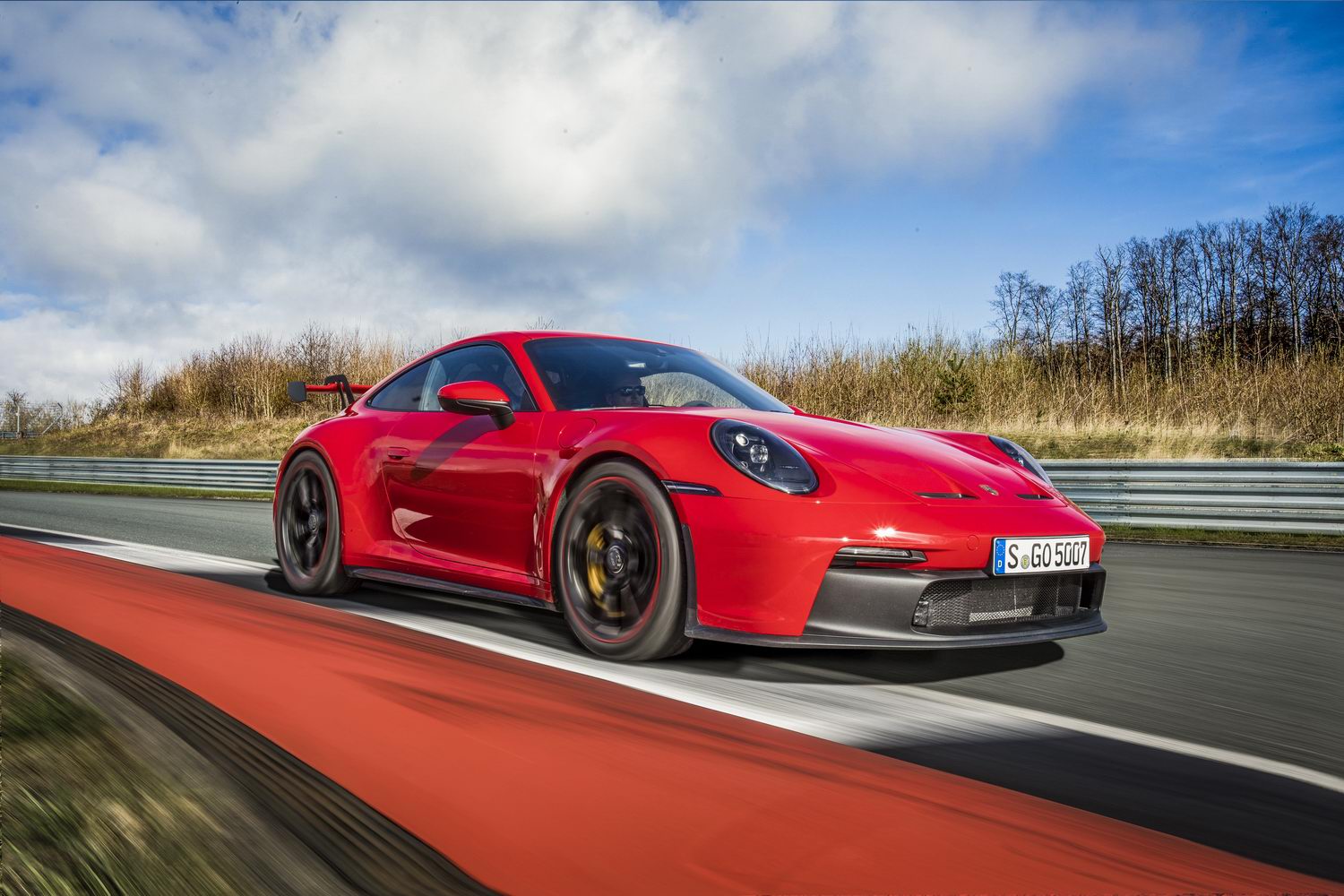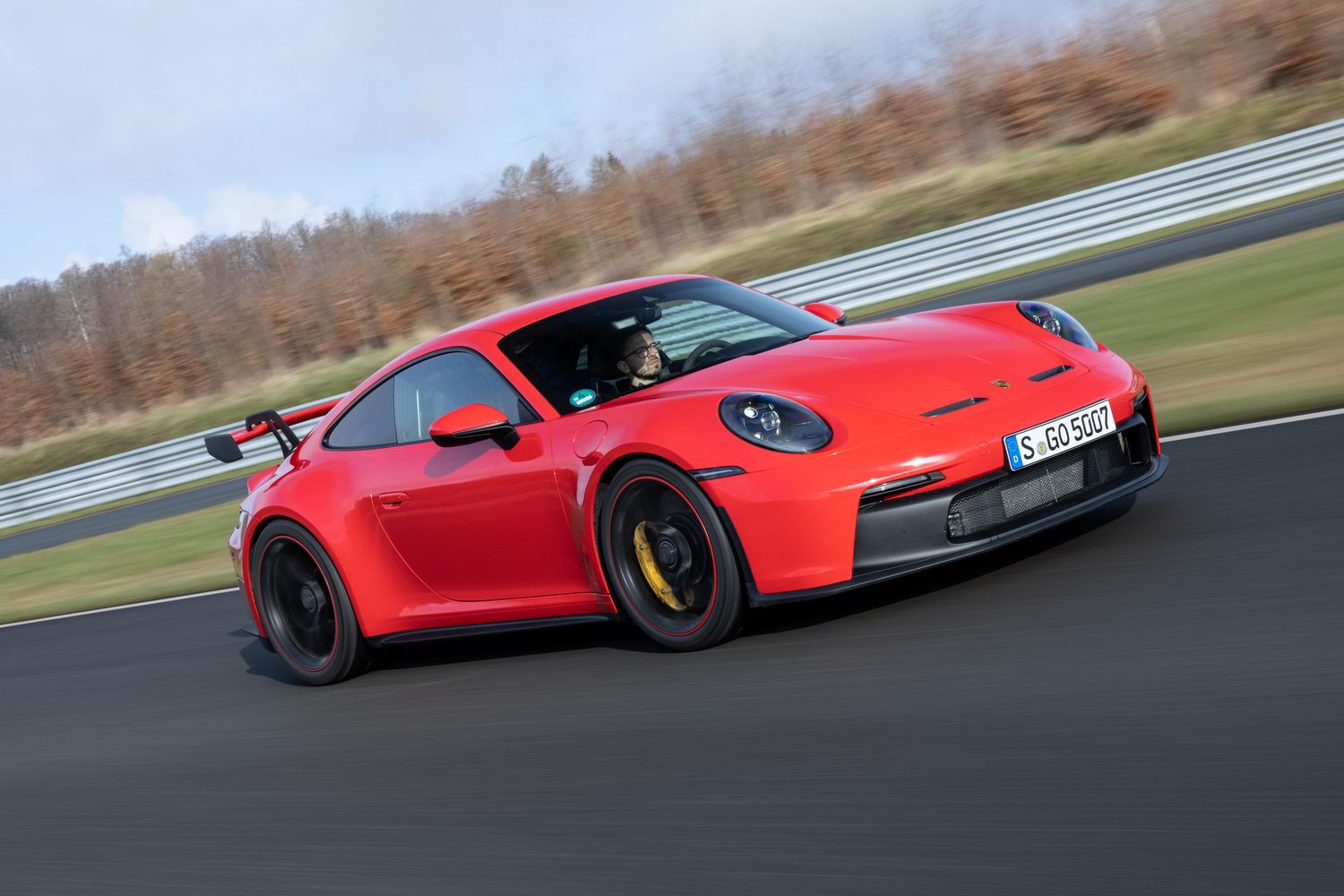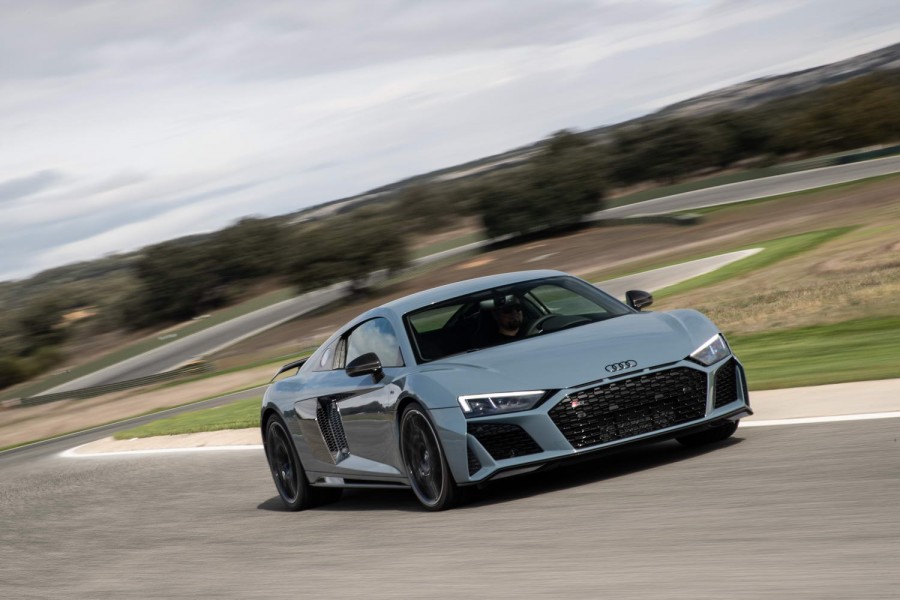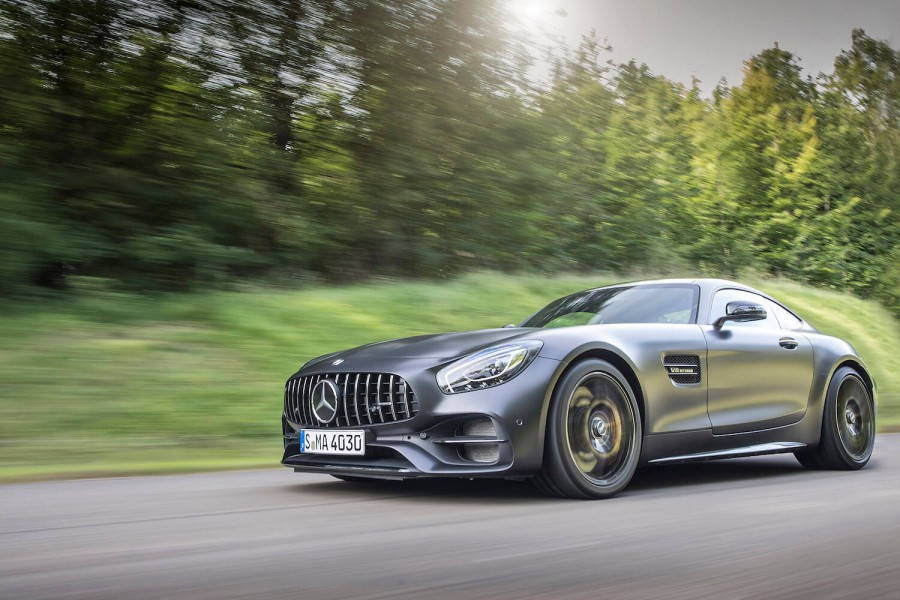At the end of the 1990s Porsche decided to make a road-going version of its Porsche Supercup car. It could have made something that was great on the road and a bit of a track-day car, but it didn't; it pretty much took the race car and made it great for the road and called it the GT3. And now there's a new one. Our first chance to drive it is on track, rather appropriately.
In the metal
The latest 992-generation version of the Porsche 911 GT3 looks every bit the track refugee you would expect. Manufactured using a combination of steel, aluminium and carbon fibre-reinforced plastic, the big talking point is the aerodynamics, in particular that large swan-neck rear wing. It's a clever piece of engineering that's held on by brackets on its top surface in order to minimise air disturbance underneath. It provides a reduction in lift and around 50 per cent additional downforce compared to the last generation. Add it to the other aero elements and total downforce is 150 per cent more at 200km/h.
The dynamic appearance is further bolstered by the wide tracks front and rear and the stunning GT3 wheels surrounded by Michelin Pilot Sport tyres. Look closely and you'll see that there's barely any space between the rubber and the wheel arches, so precisely engineered is the GT3.
Inside it's what you could call 'racing comfort'. There's lots of Alcantara on the seats, steering wheel and gear lever surround with stitched leather running across the dash. That dash is fairly stock 911, which means you get the latest tech including the Porsche Communication Management (PCM) system, climate control and digital instrumentation either side of the central analogue rev counter. There's a new 'Track Screen' button that can switch off all non-essential info, a bit like the Nightpanel button on a Saab used to, but with slightly more sporty info.
The model we drove was fitted with the Clubsport package, a no-cost option that adds a serious looking roll bar. This package also includes a fire extinguisher, six-point driver's harness and a battery cut-off switch.
It's all very sporty, but at the same time there's a sense that you still have that daily drive 911 character to enjoy when you aren't putting in your best lap times.
Driving it
It was raining in Wales for our test drive on the Anglesey race circuit, but that didn't dampen the enthusiasm to get out on track in the new GT3. Not a lot has changed in terms of the engine and performance, and nor did it need to. The 4.0-litre, naturally aspirated boxer engine gets an additional 10hp to push it up to 510hp, while the peak is 150rpm higher at 8,400rpm, with a red line at 9,000rpm. Maximum torque is also up a fraction at 470Nm. The 0-100km/h time is unchanged at 3.4 seconds and it still sounds formidable.
A manual version of the new GT3 is available, but we spent time driving the seven-speed PDK models, which allowed us to focus on getting the most out of the new suspension. What's new about it? Well for the first time Porsche has ditched the traditional MacPherson front set-up and gone with double wishbones that are almost identical to those used in the 911 RSR race car. They reduce the previous car's feeling of lightness up front, result in less lateral force and we're assured also keep the wheels on the road better when going over crests - we'll be sure to check this when we do a road drive...
After a couple of laps to get the hang of the conditions it was time to wind things up, the track feeling rather slippery under those Michelins and in Normal mode a bit of understeer here, a bit of oversteer there. Into Sport and things are much better with more satisfactory power delivery and more control in the hands of the driver. Time to hustle.
The accelerator is surgically precise, clearly created by German engineers who want every millimetre of travel to do exactly what they want it to do. In auto mode the PDK responds smoothly, punching gears only when the revs are quite high up the range. Switch to manual and it's easier to get a bit of a smack in the back with each change, but we chose to let the PDK do the work and instead focused on the steering. It too is as precise as it gets, the engineers once again having made the GT3 obedient to your every command. It veritably pivots around a central point, communicating every interaction with the track surface beneath you as you wind up the power and place the car through the apex.
The brakes are slightly larger than the previous generation's and provide confidence-inspiring stopping power as the car reaches Anglesey's hairpin. The GT3 remains composed when you want it to be, even over the blind rise and down into the top of the Corkscrew section. In a nutshell, it's everything you expect a GT3 to be on track and that's all the more impressive when we were getting to know it in the wet.
What you get for your money
Priced at €231,041, you basically get a racy 911 that you can drive to the shops or the office and then on the way home you can drop into the nearest race circuit and do some laps. What you get for your money is basically a road car and a racer in one, which seems like quite good value. The price is the same whether you want manual or PDK and if you want the Clubsport package, which won't cost you any extra. There are options though, such as the carbon fibre reinforced plastic roof, the Sport Chrono package, carbon ceramic brakes or the full bucket seat, but even so, this car is worth every cent. And some.
Summary
The Porsche 911 GT3 has been revered since the day in 1999 that it was first launched. It takes everything that makes a 911 great and then throws in the company's impressive motorsport history and expertise to create something that can satisfy the most demanding of track driver. On paper, the latest generation seems to be a slight improvement, but get behind the wheel and it's a whole new generation of GT3.


















































